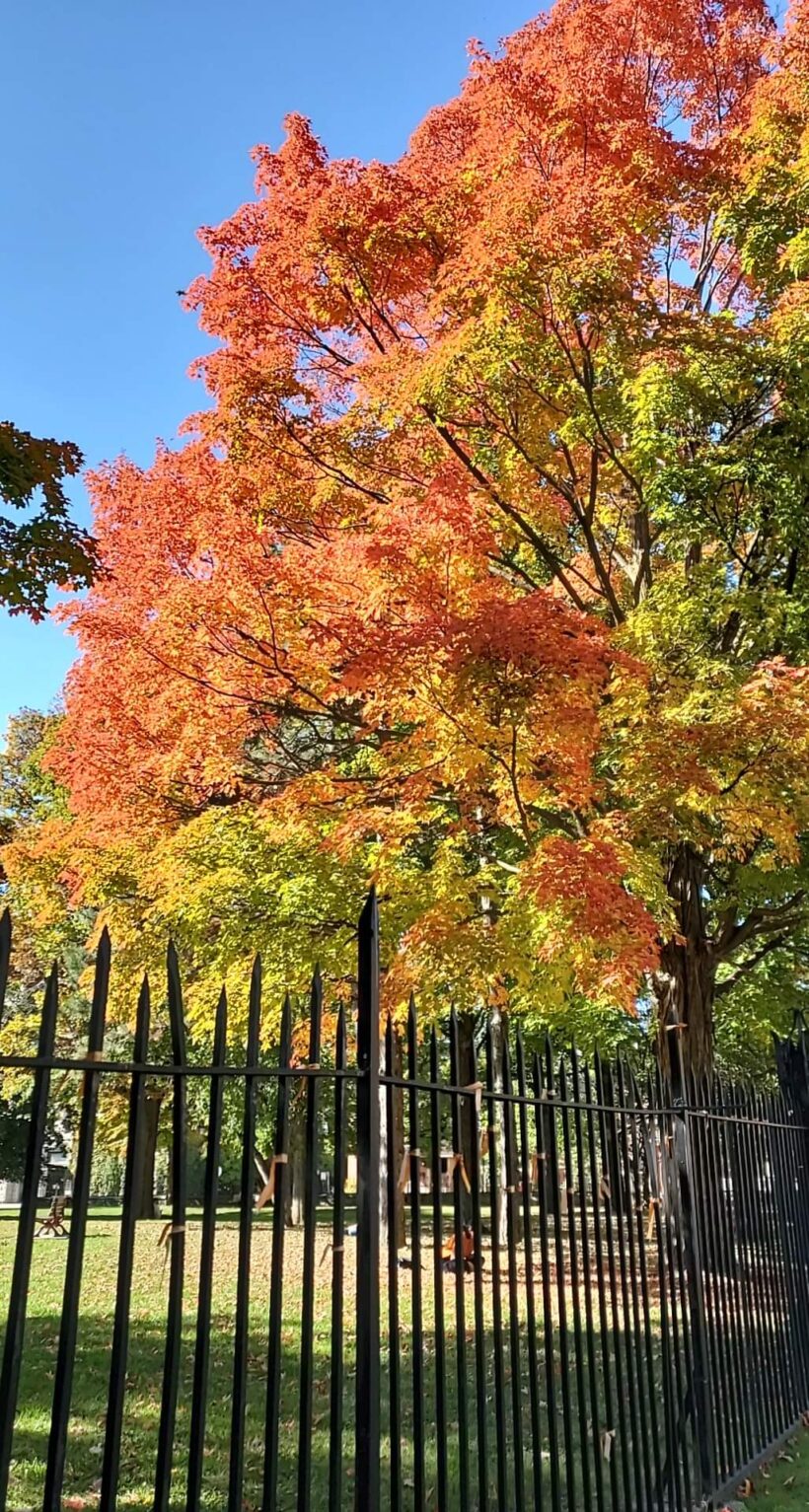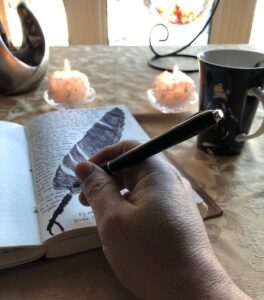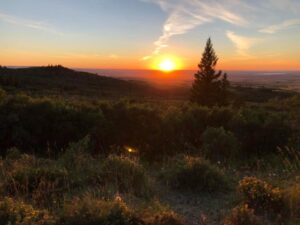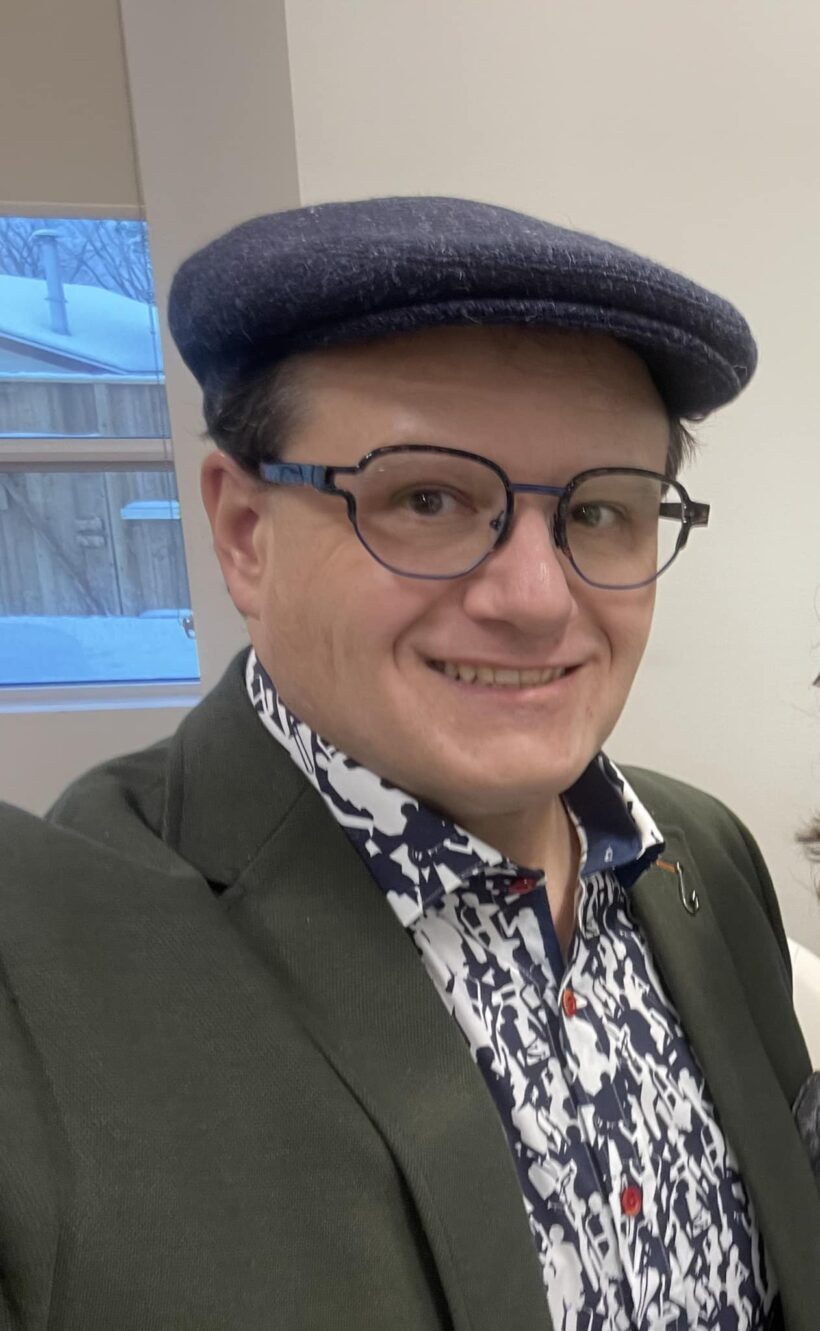“I arise today in the name of Silence Womb of the Word, In the name of Stillness Home of Belonging, In the name of the Solitude of the Soul and the Earth”
– John O’Donohue, Eternal Echoes
Edgewalkers, have you ever sat in silence and just listened to what is happening around you? Do you feel awkward with silence? Do you feel the need to fill it with the sound of your own voice, or even just thoughts as they come into your head? We are, after all, narrative beings. We feel compelled to tell stories. But long before we began to tell stories, we first listened to stories. Long before we could talk, we listened. I challenge you today, that we must take on the practice of being silent. Even more, I challenge you to practice Contemplative Silence.

In my last entry, I shared my thoughts about practicing Contemplative Silence as a part of overcoming Imposter Syndrome. But what exactly is Contemplative Silence? In the past, I have admittingly tried to crouch low and let this question pass over my head. For me, this question is similar to “How are you feeling?” I am a skinless person, advocate and turbulent introvert. I don’t know how to answer such questions. The answer is sticky, gooey and slushy, not unlike the ground in the midst of a ferocious spring thaw.
Perhaps the best answer to this question is found in the words of Jean Springer, founder of Eremos, a centre of contemplative life. Jean describes contemplative silence as follows:
Contemplative Silence is the awareness of being drawn into a spaciousness of Love. It is not so much something we ‘do’, but rather a response to ‘being’ that is irresistible resisted. In this response we yearn for a quality of stillness that both draws us inward and propels us into the world in which we live. It evokes within us a sense of wonder, of awe, of mystery, of belonging. It raises to consciousness aspects of personality and of community that need healing.
The practice of Contemplative Silence draws my attention away from the distractions of Imposter Syndrome and redirects me to inner and outer mystic voices. I listen inward to the Spirit, and outward to guides, mentors and Elders. These mystic voices tell me of my deeper created purpose, skills, abilities and potential. In the space of contemplative silence, I draw power from Creator, or Great Mystery, as I have learned from Lakota teachings.
Edgewalkers, I encourage all of you to tap into this mystic, spiritual energy that surges within and around us. Contemplative Silence leads us back to our core values, the foundation for balance in our lives. We do not need to understand the nature of this energy, but respect and appreciation are a good enough start. This is one of the key practices in my life, and I find that it is an effective combatant of Imposter Syndrome.
I will admit, I have been sitting with this topic for some time now. I have been chewing on it, processing it, regurgitating it, spitting it out, and returning to it. The challenge for me is that practicing Contemplative Silence is an extremely personal, intimate experience for me. So, trying to express this practice in words has been difficult.

But today, I was reminded about the practice of Contemplative Silence when I heard the news of a work colleague’s sudden passing. I found myself drawn into silence of a contemplative nature as a result of a tragedy. I have been seeking solace, I have been seeking peace amidst the emotional noise of grief. I am now reminded of the profound depth of solitude and consolation that comes from the practice of Contemplative Silence—a practice I am now ready to share with you.
Before I go any further, I want to stress that the solitude I speak of is not true solitude. It is, rather, a journey into the darkness towards peace, where I accept the invitation from my Creator to participate in a mystery that has no words to fully describe it. Part of the peace I seek in Contemplative Silence is found in being comfortable with “not knowing.” As I become more comfortable in this murky clarity, I can ask questions to the Divine as I stay in this space, and then bring this same stance of curiosity into everyday situations. I am, therefore, not really ever alone in solitude. I journey through the day with the Divine Family, God, Wakan Tanka, Yahweh; choose the name with which you wish to call out when you are interacting with your higher source.
So, then. I shall continue.
Contemplative life – gratitude and generosity

Contemplative Silence is spiritual at its core. To practice Contemplative Silence requires embarking upon a spiritual journey. This journey has nothing to do with religion. It has everything to do with gratitude and generosity. Dalai Lama once said, “My religion is simple. My religion is kindness.” I am convinced that the Dalai Lama was speaking of the spiritual journey that leads to a contemplative life.
Doug Good Feather is a Lakota author who I have come to admire. Some of his writing speaks to me in light of the heaviness of this day and my need for Contemplative Silence in order to find my centre and sustain me in a time of grief. These excerpts are from his book entitled Think Indigenous: Native American Spirituality for a Modern World.
Each and every morning offers us a chance to start anew, fresh and to begin again. Each morning when we wake–should we choose to listen–is a message from the Creator to remember the privilege we were given of waking up. It’s a reminder to get up and prepare our self, to honour our self, to go out into the world, to connect with Mother Earth and the hearts of other beings, to inspire and encourage those who cross our paths, and most importantly, to enjoy life.
Gratitude and generosity are similar virtues, but they differ in that gratitude is an internal characteristic and generosity is our external expression of our sense of gratitude. Basically, gratitude is how we feel, and generosity is how we express that feeling out in the world.
It starts with breath

But you may ask, “Donovan, what do I do when I am practicing Contemplative Silence?” I have learned to approach the Divine as an empty cup. So, before I can listen, I must get rid of everything that fills me. I must come before all things as an empty vessel. How long can you last without oxygen? One minute? Three? Perhaps the most fundamental practice I can master is that of healthy breathing. My practice of Contemplative Silence starts with breathing. From wherever I am in the world, the space I inhabit is sacred prayer space owned and made available by Creator. Before I can do anything else meaningful in my day, I must empty myself. Consider a cup filled with water. The water is life-giving, but for the sake of listening the water will distort the message.
Starting from where I am, I seek a comfortable posture. I might be still lying in my waking state after rest, or sitting, or standing. I seek a comfortable position, that is all. I look around me; I feel around me. I breathe in, a decent breath, as deep as comfortable. I think something like, “I receive your breath; I receive your life.” I hold it for a few seconds, and exhale. As I exhale, I think something like, “I release my thoughts, my feelings, my regrets, doubts and celebrations. I make room for what is new, what is life-giving.”
When I inhale again, I consider what is around me—plants, objects, animals, spirit. This time, I receive again, perhaps saying the same words in my mind. I repeat these breaths and mantras, finding a calming rhythm, a relaxed sensation.
Meditative listening
There is an art to my prayer and meditation that is often not respected within religious circles, at least not within western religions. The art of my prayer is silence. Listening. Learning. Ceremony. Add the discipline to do these things. There is no petition.
I best enter into my stance of not-knowing, of meditative listening, when I am close to nature. Creation and Creator are one, and I am one with Creation. In nature, I can listen to the other sounds that bring me into alignment with my Creator. David George Haskell describes my listening process well in his book entitled The Songs of Trees:
The bird’s steps are fox silent on the rotting needles, then crackle as its feet pass over the trail. My own footfall is like the grind and punch of walking on a sidewalk strewn with glass. Even tree roots evoke sound. The well of growing roots causes shards of rock to click, a sound so quiet and soil-muffled that I detected it only with a probe nestled into the rocky ground… too few human ears have attended to the soil’s chatter. (p. 40)
This is what I listen for when I meditate: the chatter of rocks upon Mother Earth’s skin; the flow of Spirit’s breath in the trees and grass, Mother Earth’s hair; and the ebb and flow of life in all things, Mother Earth’s heartbeat. It is here where I first begin to truly listen and understand my place in this world. I am both insignificant and magnificent. The paradox of my existence is the space of not-knowing that brings me to a place of peace and comfort. We are called, Edgewalkers, into such an existence. This is where we belong, and it is from this existence that we become a beacon to those we lead.
Seek wisdom of others

We are a community of practitioners. Ours is a hive of wisdom, a collection of experiences that surpass comprehension. Did you know, the Black-capped Chickadees in one neighbourhood learn and teach those around them how to forage in specific ways that suit them best? The wonder of it all is that from one neighbourhood to the next, they behave differently, and their behaviour is carried from one generation to the next. The origins of the behaviour, the ancestors who first discovered, practiced, and taught the behaviours, have long since left this earth. But their practice lives on in the generations that have followed. This is ancestral wisdom; this is the wisdom of a community of practice.
When I practice Contemplative Silence, I pause and pitch my tent. I stretch out the tent pegs and make the lines tight so there is more space in my tent to invite others in. Mentors, Elders, Creator and Spirit—I invite them all. Some come to me because I have simply opened the door and they felt the invitation.
Edgewalkers, when we open ourselves to that which we do not know and become accustomed to its presence, to the presence of silence surrounding us, we ask questions. The answers are not ours to own, but they are ours to receive and learn. They then become ours to practice and teach. Finally, they become ours to release.
Distractions
In my meditation, many thoughts enter my mind at the risk of tripping me, causing me to stumble as I sit in this sacred ceremony of Contemplative Silence. In our everyday practices, these are the participants in our workshops who are there because they have been told to attend, or who keep looking at their phones, talking to their neighbours about unrelated topics, you get the picture.
I see them, these distractions. I feel them even when they are out of my sight. I have come to a place in my practice where I am able to let these distractions go by. It is for this reason that others feel safe when I am in the room. They feel the calm that I bring when I am in a position of leadership or facilitation. It is for this reason that others have referred to me as a godly man and their spiritual guide. This is not common workplace talk, but it is, nonetheless, my reality.
 But sometimes the distractions are larger than life. Sometimes they demand my attention. Death of a co-worker, unplanned illness, are just a couple of distractions that bring me back to Contemplative Silence and to the wisdom of those who walk in this meditative state. We all have distractions that call us into community; this community might be the trees, Creator, each other. This is what makes Edgewalkers, because we have learned to skate on the outer-regions of our existence together and grapple with the big unknowns that lurk there.
But sometimes the distractions are larger than life. Sometimes they demand my attention. Death of a co-worker, unplanned illness, are just a couple of distractions that bring me back to Contemplative Silence and to the wisdom of those who walk in this meditative state. We all have distractions that call us into community; this community might be the trees, Creator, each other. This is what makes Edgewalkers, because we have learned to skate on the outer-regions of our existence together and grapple with the big unknowns that lurk there.
Practice
Somewhere along the way of living in the liminal space of Contemplative Silence, it became a space of comfort for me. I do not know exactly when it was, but it happened. For many of you, it has also happened or is going to happen. I emphasize to you the importance of practice. With co-practitioners, within this community of Edgewalkers, we find encouragement to create the space that allows our practice to evolve. It takes time and focused effort.
Friends, we are called to a purpose unique in every way. Leadership is the way of Edgewalkers. We are first listeners and learners. Then we practice and teach, then we let go of what we know. But we never stop, because this cycle is critical to our way of existence. We never stop seeking the outer reaches. We never stop learning. This is our way; this is the way of Edgewalkers.
 Donovan Mutschler, MA
Donovan Mutschler, MA
For more information on the content or processes included in this article contact Donovan Mutschler at donovan@edgewalkers.ca.
Be First to Comment